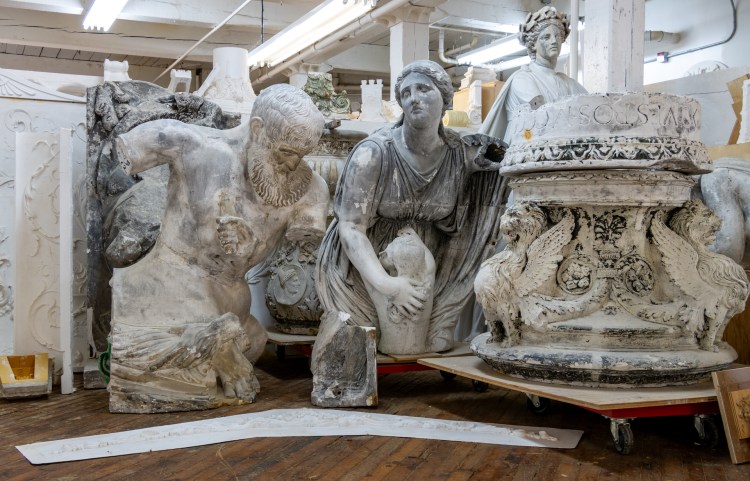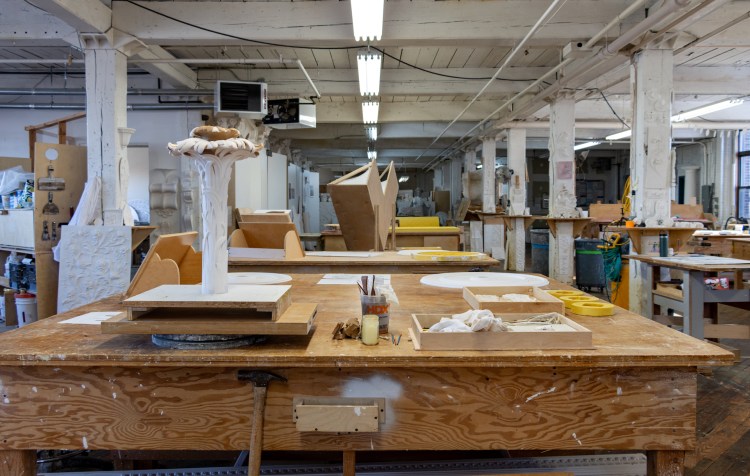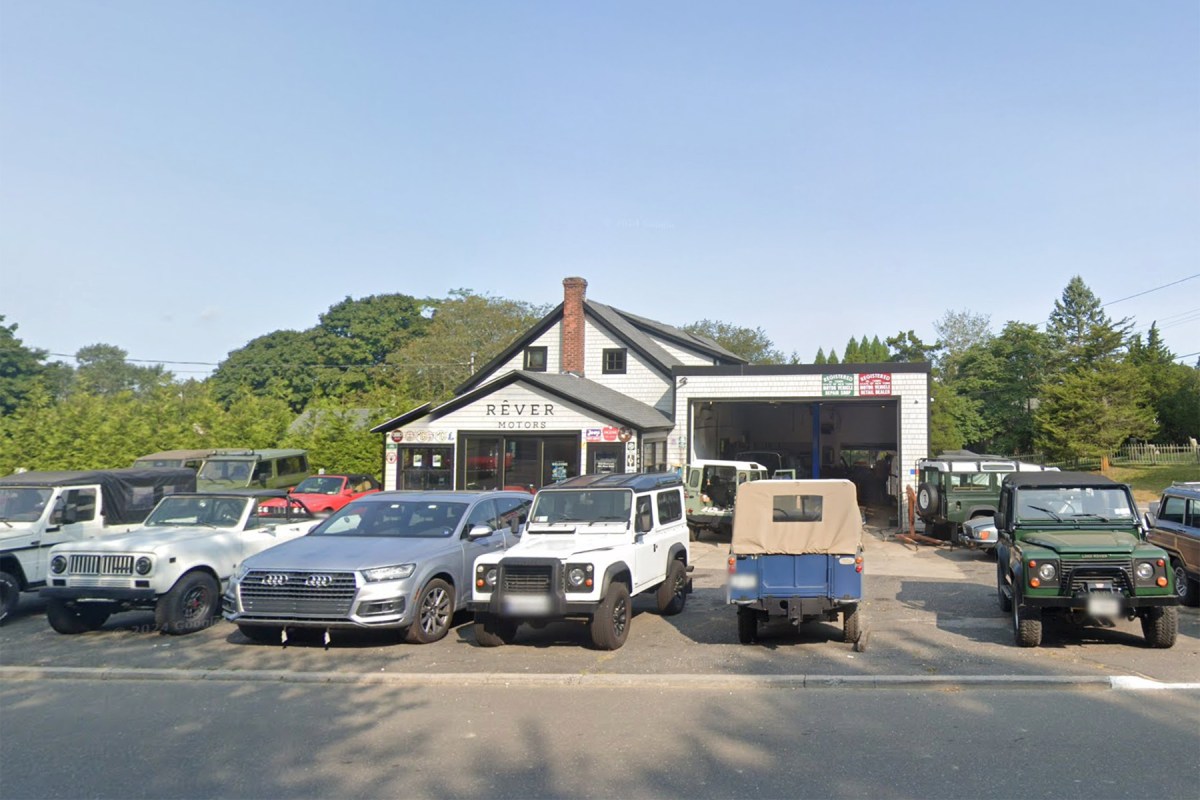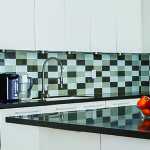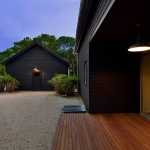If a Hamptons designer is looking for, say, finely detailed cornice work or a complex project incorporating stuc pierre (a centuries-old stucco technique that emulates the look of limestone), she’s likely to make a pilgrimage across the Pulaski Bridge to Foster Reeve’s massive sun-drenched studio in Greenpoint, Brooklyn.
With offices and fabrication facilities in New York, Los Angeles and Palm Beach, Reeve’s company is one of the country’s premier suppliers of architectural and ornamental plaster.
But long before he became a master plasterer and founded the business that bears his name, Reeve learned his trade the old-school way.
When he attended tiny Marlboro College in Vermont (later absorbed by Emerson College), Reeve’s parents paid his tuition, but they told him that they expected him to earn his living expenses on his own. To support himself, he found work with a Polish family in Brattleboro, VT who built houses from the ground up.
“I loved it,” he says. “I was sweating pipe and doing wiring, slate roofs, framing and drywall. Over four years I became a jack of all trades in the construction industry.”
Armed with a degree in sculpture with a minor in mathematics and plenty of real-world construction experience, Reeve landed in New York City in the mid-1980s. “I was not the most talented person in the mix – and I’m almost grateful for that,” he says.
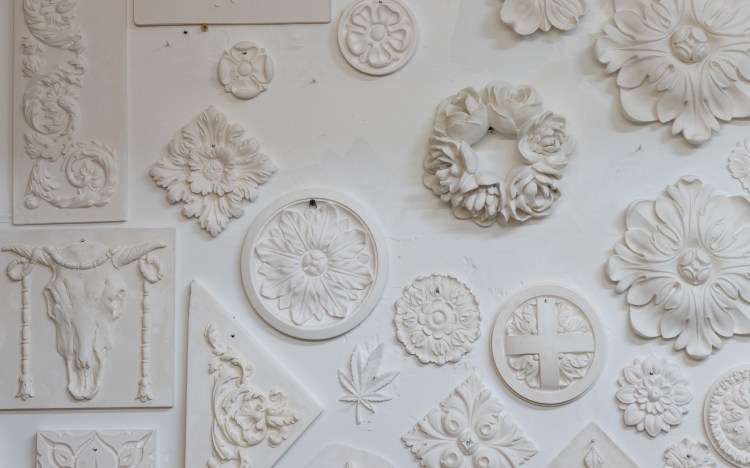
“I was very happy to be striving, copying and looking for mentorship.”
During his early days in New York, a contractor Reeve was working for asked him to handle a plastering job in a Hell’s Kitchen duplex, straightening and evening-out the supporting wall of a fireplace. As Reeve was sweet-coating and putting the final touches on the job, he didn’t realize that the contractor had quietly pulled up a chair in the corner of the room to check out Reeve’s approach to the project and his plastering technique. The contractor was very impressed, telling Reeve that he didn’t know anyone who could do what he had just watched his young assistant do.
“I turned out to be a diamond in the rough in the plaster business,” he recalls.
Ostensibly in New York to break into the art world, Reeve was painting and sculpting in his free time and paying the bills with construction and plastering gigs. His art connections from his college years led to renovation and fabrication work on photography sets, fashion studios, theaters and other creative spaces around the city – jobs that helped him establish important contacts in the upscale design community.
As it turned out, Reeve’s experience working construction in artsy spaces would become the catalyst that ultimately launched his career as a plaster artisan.
And colored plaster proved to be the game-changer.
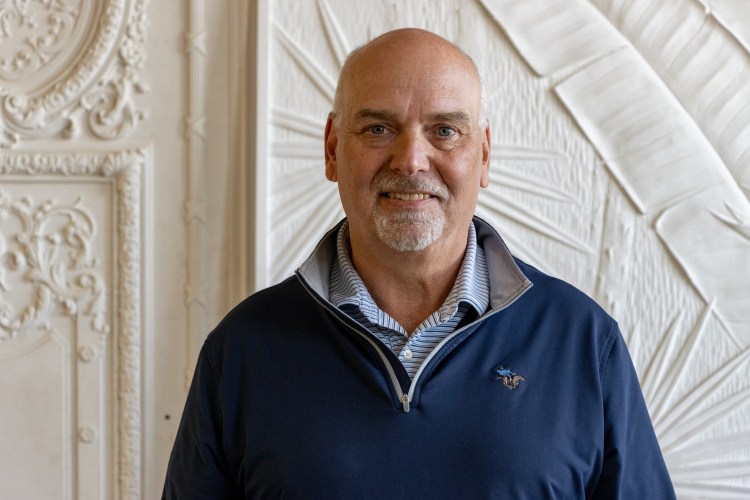
Reeve knew that integral colored plaster was a sought-after commodity in the design world at the time, and that not a lot of local artisans were doing it well. Recognizing an opportunity, he began experimenting with various pigments and dyes, none of which he found to be ideal for creating the kind of deep purples, yellows, pinks and other exotic colors that creative space designers were looking for in the late-’80s and early-’90s.
In order to make rich integral colors, Reeve found that he needed to use so much powdered pigment that the chemicals in the dye were adversely affecting the performance of the lime. And he still wasn’t able to create the vivid hues he wanted.
“Lime putty is as white as you can possibly imagine,” Reeve explains. So if you want that to become a dark color, it’s the longest journey in the world.”
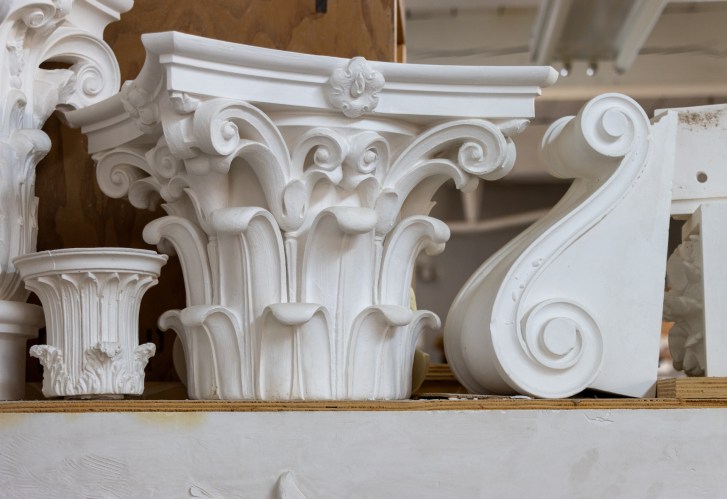
Reeve’s eureka moment came when he hooked up with an artist’s supply shop in Manhattan. As a painter himself, Reeve was familiar with Guerra Paint & Pigment, which at the time was on 13th Street in the far East Village and has since moved to Maspeth, Queens. Art Guerra, the shop’s late owner, had the solution Reeve was looking for.
Guerra explained that all the natural pigments he sold could withstand the PH levels Reeve needed to create intensely colored plaster.
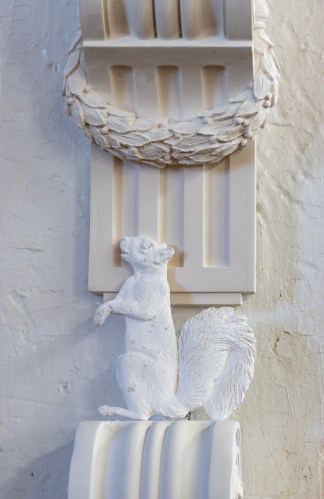
By that time, Reeve had already begun to sour on the insular and highly competitive New York art scene.
“I was thinking about how lonely it was being an artist in New York where it’s you against the world,” he says. “I was asking myself, ‘How do I make art that’s actually a business?’– and [finding those pigments] really inspired me.”
Another seminal moment in Reeve’s career came when he found work with an architectural firm that was renovating the Virginia Theatre (now the August Wilson Theater), a Broadway venue that had fallen on hard times. The producers were mounting a production of the then-new musical, Smokey Joe’s Cafe, featuring the songs of Leiber and Stoller. The vision for the theater included integral colored plaster walls in a brownish palomino red.
“For $40,000, we did the entire interior of that theater,” Reeve recalls. “They were literally bolting seats down as people were coming in for opening night.”
Smokey Joe’s went on to be nominated for multiple Tony Awards and take home a Grammy for Best Original Cast Album. And with the theater restoration under his belt, Reeve’s business began to pick up.
“After that, I could strut my stuff a little,” he says. “I could walk into a designer’s office and say, “Yeah, we just did Smokey Joe’s Cafe.’”
Though his company still does plenty of work with colored plaster, Reeve spends most of his time these days overseeing an in-house staff of artists and installers who perform meticulous museum restorations and create original and emulated plaster designs for some of the finest homes in the country. Projects can range from relatively modest moulding or accent work to entire interiors in plaster.
Why opt for plaster over other natural and manmade building materials? Reeve offers a litany of reasons:
Plaster is environmentally stable; it doesn’t move with changes in humidity and temperature, nor does it support the growth of mold or release toxins. It’s also extremely durable (Reeve calls gypsum “as strong as stone”) and cost effective. Reeve points out that when created with plaster, “complex ceilings, such as groin vaults, barrel vaults, domes, and complex coffers can be pre-fabricated and installed quickly and efficiently, with no framing required.”
While a lot of the work his company does is infused with a modern sensibility, Reeve stresses the importance of classical training in architecture and design.
“If you don’t know the fundamentals of classicism – if you haven’t studied them and digested them and made them part of your DNA, then going off and designing without that is like trying to play basketball with one arm,” he says. “Yes, you can do it, but it’s not going to be very good.”
“I think the goal of good interior design is to create a space that impacts your psyche in a positive way,” he continues. “If you look at classical architecture, you’re going to see these little moments – a lot of things that fall easily on the eye and the mind…
When you talk about people who are trained classically, there’s always something that’s kind of calming you down in the spaces they create – and it’s all part of the architecture.”
This article appeared in the February 2025 issue of Behind The Hedges magazine. Read the full digital edition here. To read more from the Master Craftsman column, click here.
